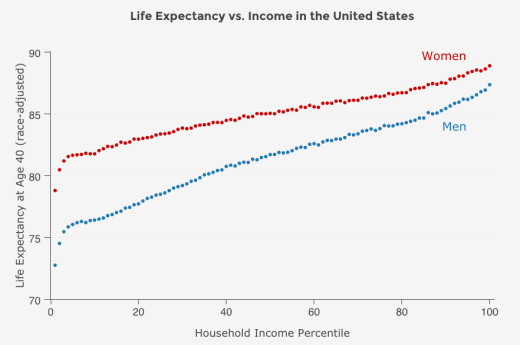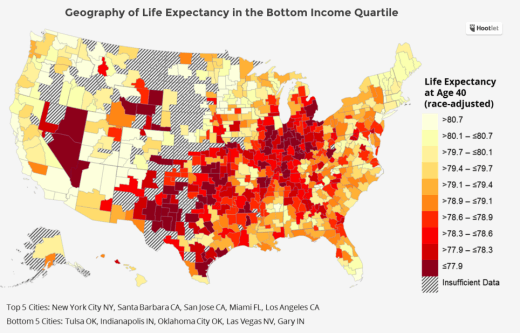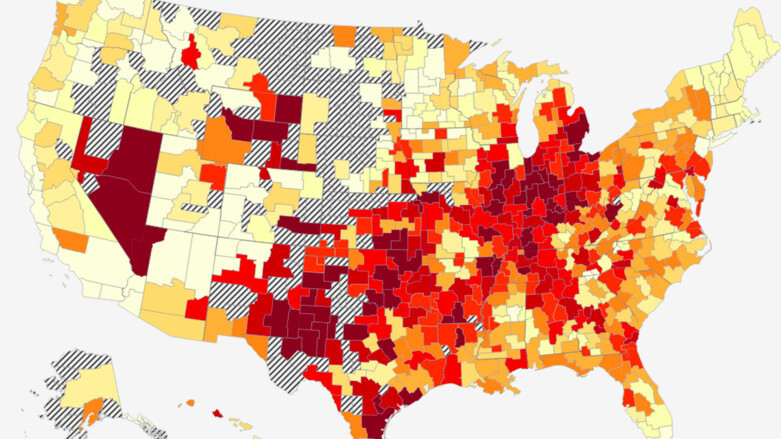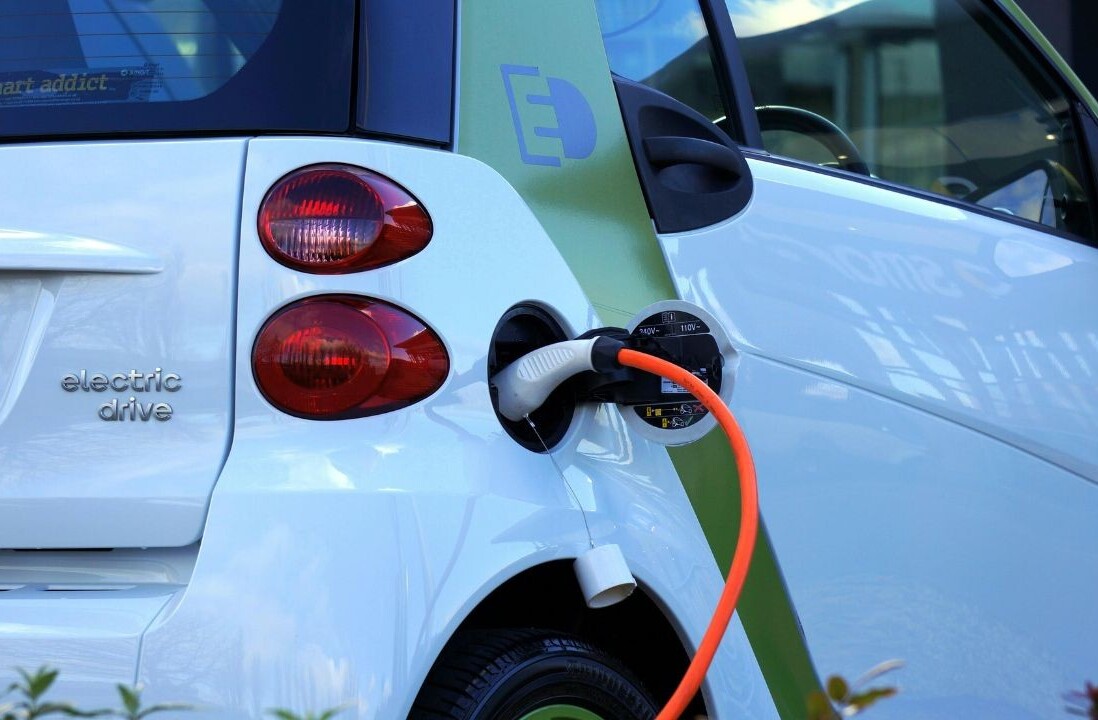The richest men in the US now outlive the poorest by a whopping 15 years, according to a new big data project from Harvard University, representing the same difference in life expectancy with people living in war-torn Africa.
The Health Inequality Project analyzed 1.4 billion federal tax records on income and life expectancy, and found rich women, too, outlive the poor by a full decade.

There’s a significant difference across different cities, though, with low-income earners living the longest in California, New York, and Vermont, while they live the shortest in Nevada.
That’s up to six years longer for the poorest people living in New York City, for example, compared to those in Detroit.

And while the rich are living longer, overall, the poor are seeing no increases in lifespan, meaning the gap is getting wider.
The research has been opened up as publicly-available data so you can find and use it to create new visualizations or tell local stories.
This is the first time that it has been possible to compare America’s rich and poor on such a granular level.
The team concluded that most of the differences could be explained by different health behaviors, including likelihood of smoking or the amount of exercise done, rather than poverty itself, although they admitted that the real reason is still unclear.
Speaking to the Harvard Gazette, David Cutler, the Otto Eckstein Professor of Applied Economics and a professor at the Harvard Kennedy School and the Harvard T.H. Chan School of Public Health, said:
These differences are very, very troubling. The magnitude is startling. You might expect two or three years of life differential — which is roughly what we would get by curing cancer — but 10 or 15 years … it’s an immense difference. We don’t know exactly why or what to do about it, but now we have the tools to ask those questions.
Get the TNW newsletter
Get the most important tech news in your inbox each week.





